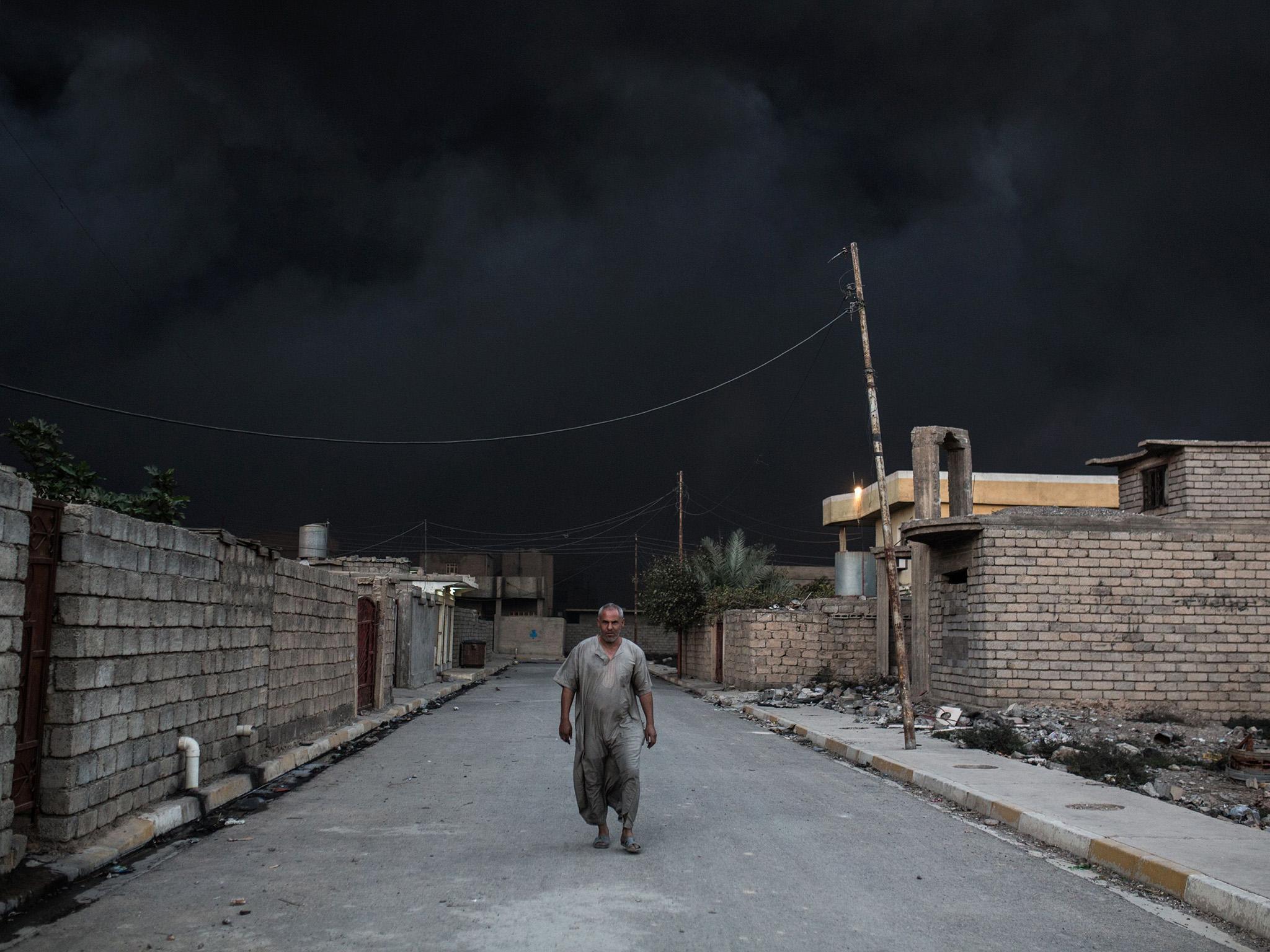Compare the coverage of Mosul and East Aleppo and it tells you a lot about the propaganda we consume
In both countries, two large Sunni Arab urban centres – East Aleppo in Syria and Mosul in Iraq – are being besieged by pro-government forces strongly supported by foreign airpower. Yet the coverage is very different


I was in Iran in early 2011 when there were reports from opposition sources in exile saying that protests were sweeping the country. There was some substance in this. There had been a demonstration of 30,000 protesters in north Tehran on 14 February – recalling the mass protests against the allegedly fixed presidential election of 2009 – that had caught the authorities by surprise. There was hopeful commentary from Western pundits suggesting that the Arab Spring uprisings might be spreading to Iran.
But, by the time I got to Tehran a few days later, nothing much appeared to be going on, though there were plenty of bored looking riot police standing around in the rain doing nothing. It looked as if the protests had dwindled away, but when I checked the internet I found this was not so. Opposition spokesmen were claiming that protests were taking place every week not just in north Tehran but in other Iranian cities. This account appeared to be confirmed by videos running online showing protesters resisting baton-wielding riot police and militiamen.
I met some friendly Iranian correspondents working for the foreign media and asked why I was failing to find any demonstrations. The reporters were well informed, but could not work because their press credentials had been suspended by the Iranian authorities. They laughed when I described my vain pursuit of the anti-government protests, explaining that I was failing to find them because they had ceased earlier in the month.
One journalist usually sympathetic to the opposition said that “the problem is that the picture of what is happening in Iran these days comes largely from exiled Iranians and is often a product of wishful thinking or propaganda.” I asked about the videos online and he said that these were mostly concocted by the opposition using film of real demonstrations that had taken place in the past. He pointed to one video, supposedly filmed in the middle of winter, in which trees covered in leaves were clearly visible in the far background.

I asked the journalists if this was not the fault of the Iranian government which, by suspending the credentials of local reporters who were credible eyewitnesses, had created a vacuum of information which was swiftly filled by opposition propagandists. The stringers agreed that to some extent this was so, but added gloomily that, even if they were free to report, their Western editors “would not believe us because the exiles and their news outlets have convinced them that there are big protests here. If we deny this, our bosses will simply believe that we have been intimidated or bought up by the government.”
It is a salutary story because later the same year in Libya and Syria opposition activists were able to gain control of the media narrative and exclude all other interpretations of what was happening. In Libya, Gaddafi was demonised as the sole cause of all his country’s ills while his opponents were lauded as valiant freedom fighters whose victory would bring liberal democracy to the Libyan people. Instead, as was fairly predictable, the overthrow of Gaddafi rapidly reduced Libya to a violent and criminalised anarchy with little likelihood of recovery.
In present day Syria and Iraq one can see much the same process at work. In both countries, two large Sunni Arab urban centres – East Aleppo in Syria and Mosul in Iraq – are being besieged by pro-government forces strongly supported by foreign airpower. In East Aleppo, some 250,000 civilians and 8,000 insurgents, are under attack by the Syrian Army allied to Shia paramilitaries from Iran, Iraq and Lebanon and supported by the Russian and Syrian air forces. The bombing of East Aleppo has rightly caused worldwide revulsion and condemnation.
But look at how differently the international media is treating a similar situation in Mosul, 300 miles east of Aleppo, where one million people and an estimated 5,000 Isis fighters are being encircled by the Iraqi army fighting alongside Kurdish Peshmerga and Shia and Sunni paramilitaries and with massive support from a US-led air campaign. In the case of Mosul, unlike Aleppo, the defenders are to blame for endangering civilians by using them as human shields and preventing them leaving. In East Aleppo, fortunately, there are no human shields – though the UN says that half the civilian population wants to depart – but simply innocent victims of Russian savagery.
Destruction in Aleppo by Russian air strikes is compared to the destruction of Grozny in Chechnya sixteen years ago, but, curiously, no analogy is made with Ramadi, a city of 350,000 on the Euphrates in Iraq, that was 80 per cent destroyed by US-led air strikes in 2015. Parallels go further: civilians trapped in East Aleppo are understandably terrified of what the Syrian Mukhabara secret police would do to them if they leave and try to pass through Syrian government checkpoints.
But I talked earlier this year to some truck drivers from Ramadi whom I found sleeping under a bridge in Kirkuk who explained that they could not even go back to the ruins of their homes because checkpoints on the road to the city were manned by a particularly violent Shia militia. They would certainly have to pay a large bribe and stood a good chance of being detained, tortured or murdered.
The advance on Mosul is being led by the elite Special Forces of the Iraqi counter-terrorism units and Shia militias are not supposed to enter the city, almost all of whose current inhabitants are Sunni Arabs. But in the last few days these same special forces entered the town of Bartella on the main road twelve miles from Mosul in their black Humvees which were reportedly decorated with Shia religious banners. Kurdish troops asked them to remove the banners and they refused. An Iraqi soldier named Ali Saad was quoted as saying: “(T)hey asked if we were militias. We said we’re not militias, we are Iraqi forces and these are our beliefs.”
It may be that Isis will not fight for Mosul, but the probability is that they will, in which case the outlook will not be good for the civilian population. Isis did not fight to the last man in Fallujah west of Baghdad so much of the city is intact, but they did fight for Khalidiya, a nearby town of 30,000, where today only four buildings are still standing according to the Americans.
The extreme bias shown in foreign media coverage of similar events in Iraq and Syria will be a rewarding subject for PhDs students looking at the uses and abuses of propaganda down the ages.
This has been the pattern of reporting of the wars in Syria and Iraq over the last five years. Nothing much has changed since 2003 when the Iraqi opposition to Saddam Hussein had persuaded foreign governments and media alike that the invading American and British armies would be greeted with rapture by the Iraqi people. A year later the invaders were fighting for their lives. Misled by opposition propagandists and their own wishful thinking, foreign government officials and journalists had wholly misread the local political landscape. Much the same thing is happening today.
Join our commenting forum
Join thought-provoking conversations, follow other Independent readers and see their replies
Comments